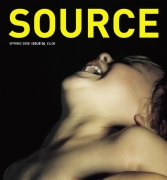EDITORIAL:
Issue 54 — Spring 2008
Issue 54 — Spring 2008
View Contents ▸
Children have often been the focus of photographs and enjoy making pictures themselves, but pictures made for them or by them are generally disregarded. David Campany has been looking at photography books made for children and has discovered a rich and diverse literature including work by many famous photographers. Discussing a few different examples he shows that these books address fundamental questions about photography, learning and representation that make them worthier of closer attention.
Anthony Luvera has extended his personal study of collaborative self portraiture (see Source 43) to examine strategies employed by artists in using photographs taken by children. He finds a marked difference in approach between the work of Judy Harrison from the 1980s and more recent examples aspiring to genuinely educate the participants about the nature and role of photography.
Barry Fletcher's Dens project began as part of the preparation for his degree show. He put out a call for adults willing to take him back to the location of the dens or camps where they had played as children. These anonymous locations are rediscovered and defined through the childhood memories of the sitters.
In 2002 Alexandra McGlynn began photographing the three dimensional structures made by her daughter Aurelia, then aged four. As Lucy Soutter remarks in the essay accompanying the work, she is like a bricoleur, creatively recombining the objects in her environment to make a new imaginative world of her own. In the process she repeatedly transforms the chaos of the world into a personal order.
Wiebke Leister has written previously (in Source 46) that it is hard to tell if a photograph of someone laughing depicts joy or pain. Consequently these pictures 'open up a (psychological) space in favour of imaginative readings of photography'. Introducing Wiebke's pictures, Yve Lomax describes how we can think about a moment or a 'meanwhile' as a temporal ambiguity that encourages similar creative and unfixed thinking about photographs.
— The Editors





